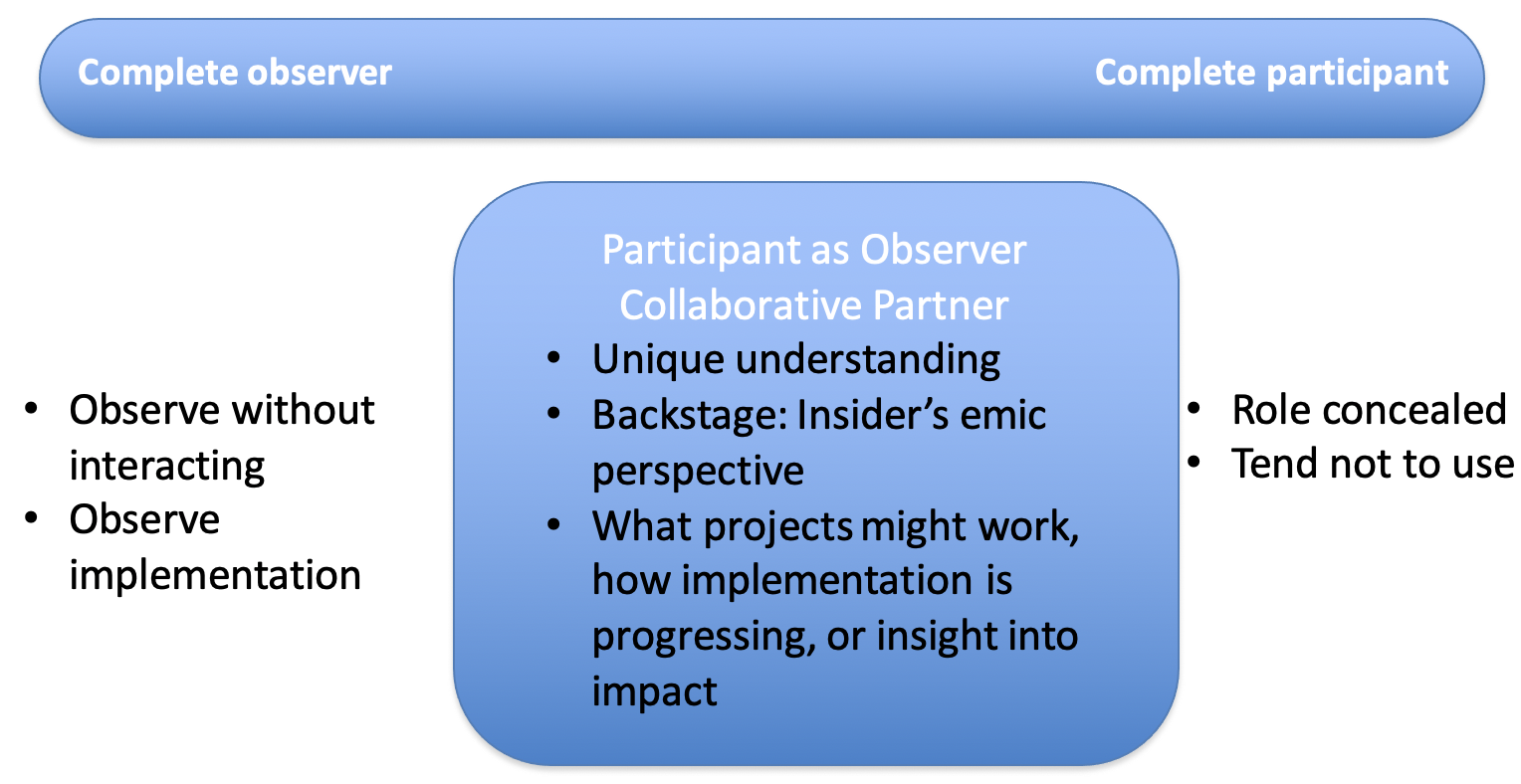
Greetings! I am Beverly Peters, a faculty member in Measurement and Evaluation at American University. I have over 25 years of experience teaching, researching, and evaluating community development and governance projects, mainly in southern Africa. I have spent the bulk of my career using qualitative methods to evaluate projects; and write a blog for American University on Qualitative Research Methods for Monitoring and Evaluation.
Observation and Participant Observation are both very important tools that evaluators have in their qualitative methods toolbox. But what is the difference between observation and participant observation? How can we use these tools for evaluation? In this 4 part series on Using Observation and Participant Observation for Monitoring and Evaluation, I will discuss the use of these tools, from planning your data collection to observing, taking notes, and analyzing data. Let’s get started!
The qualitative methods literature (Bernard, 2017; Merriam and Tisdell 2015; Tracy 2019) puts observation and participant observation activities on a continuum. On one side of the continuum, the evaluator would be a complete observer who observes the project without interacting with participants. Although in some disciplines our observation role is concealed, usually project participants recognize the role of the evaluator in observation.
Evaluators use complete observation regularly, especially to gather data during project implementation. Perhaps we attend a training session or visit a classroom environment; we observe and take notes on the activities taking place, and we integrate these into our evaluation. From this, we tend to collect the etic, or the outsider perspective.
On the other side of the continuum is complete participation. In this scenario, the evaluator is a complete participant, and their research role is concealed. Evaluators tend not to play the complete participant role for ethical and logistical reasons.
Where we often find ourselves as evaluators is somewhere in the middle, right of the continuum, where we play a participant as observer or collaborative partner role. When we find ourselves in the middle ground, we gain a unique understanding of project implementation from participating in it.
We can understand the importance of the collaborative partner role from its basis in anthropology. Early ethnographers like Bronislaw Malinowski and later Margaret Mead argued that the cultural anthropologist could not simply observe to learn about the inner workings of other cultures. Anthropologists needed to interact with local populations, developing close personal relationships and trust with people, so that they could collect data that helped them to understand the local culture. This would allow the researcher to enter what anthropologists call the “backstage,” where you understand the emic, or insider, perspectives.
This basis in ethnography helps us to articulate how evaluators use participant observation in their work today. Like cultural anthropologists, evaluators want to understand the emic behind the projects they evaluate. This helps us better understand program implementation, outcomes, and even impact.

Do you have questions, concerns, kudos, or content to extend this aea365 contribution? Please add them in the comments section for this post on the aea365 webpage so that we may enrich our community of practice. Would you like to submit an aea365 Tip? Please send a note of interest to aea365@eval.org. aea365 is sponsored by the American Evaluation Association and provides a Tip-a-Day by and for evaluators.
